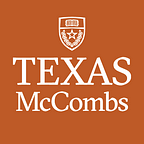Brick-and-Mortar Retailers Could Get a Boost by Tracking In-store Displays
Internet of things technology gives suppliers the ability to more efficiently monitor promotional displays — and boost profits.
Based on the research of Ioannis Stamatopoulos
Whether it’s Christmas or the summer season, shoppers often face in-store promotional displays designed to nudge buying. New research is looking at ways stores can improve use of those displays to stay competitive with online retailers.
Promotional displays are frequently left out too late — or taken down too soon — and sometimes never even make it out in the store, according to research by Texas McCombs Assistant Professor Ioannis Stamatopoulos.
“Promotions are yet another way to communicate with your customers,” says the professor of Information, Risk, and Operations Management. “If you’re not communicating with your customers the way you thought you were, that’s a problem.”
Stamatopoulos is working with Shelfbucks, an Austin-based company that tracks and measures data on in-store product merchandising, to analyze data on promotional displays. The retail industry spends about $25 billion each year on product displays, and Shelfbucks is currently monitoring more than 100,000 of them, according to company data.
Stamatopoulos’ research attempts to improve the promotional display process using internet of things technology, which connects devices to electronic objects using the internet. His project, with Associate Professor of IROM Ashish Agarwal and doctoral student Jacob Zeng, uses electronic sensors attached to the displays to measure how often they are put out on time, for how long, and how that may affect retailers’ profits.
Shelfbucks founder and CEO Erik McMillan, BBA ’03, says the research will be able to help answer commonly asked questions for his customers, which are major retail outlets.
“Promotional display execution is important because when a brand’s best-planned display is executed in front of shoppers at their favorite retail store, shoppers buy more product,” McMillan says. “If the display is not planned correctly or is not executed, the shopper buys less product.”
Lost in the Supply Chain
Shelfbucks uses internet of things technology to track promotional display locations and report GPS data to retail suppliers. The technology helps suppliers ensure that their displays appear on the store floor for the planned amount of time.
Companies spend millions of dollars on promotional displays, but a large portion of displays never even make it out to the store floor. Because such displays aren’t tracked in the supply chain, they can easily get forgotten in a back room or sent to the wrong location.
Online retailers simply have to code a promotion to pop on their websites for an allocated period of time, rather than sending out promotional displays to multiple locations and relying on managers to get them out to the floor in time.
“With physical stores, these things are much trickier. That’s a disadvantage that’s inherent in brick and mortar retail,” Stamatopoulos says.
The Problem with Promotional Displays
The first phase of Stamatopoulos’ research tracks how often promotional displays are actually making it onto the store floor during pre-determined times.
Stamatopoulos estimates that 30 percent of the displays never make it to the floor at all, and those that do are only used for about half of the planned time.
“We are actually finding that the execution is really, really bad,” he says. “They’re put on the floor early and moved early, or they’re put out late and moved late. It’s more often than you might expect.”
The second part of Stamatopoulos’ research attempts to measure the value lost as displays sit in the back of the store.
Stamatopoulos compares sales before, during, and after the promotional displays are on the store floor. His initial findings indicate that forgetting to bring out displays on time — or forgetting to take them down — could have a negative influence on profits.
When the displays are put out also matters. For example, he says you wouldn’t want a Santa Claus-themed display to be set out too early or left up after the Christmas holidays.
Testing Solutions
As the final part of their research, Stamatopoulos and his coauthors are looking for a solution to erratic display execution.
Traditionally, auditors conduct an in-person check on promotional displays. However, the research team has had suppliers instead send out different types of notifications — such as emails or verbal reminders during meetings — to managers who fail to put out displays. They can tell which notifications appear to be most effective, based on how quickly the display is then brought out onto the floor.
The approach being tested, Stamatopoulos says, is the “gentle nudge.” A simple reminder could be a solution that saves suppliers both time and cost.
“Imagine how cheap that is, as opposed to, say, expensive audits or signing a contract with a store manager with specific incentives in place,” Stamatopoulos says. “This is a very simple thing, it’s like setting a reminder for your next meeting.”
Beyond Execution
Shelfbucks CEO McMillan says perfecting the in-store display goes beyond execution and includes design display type and companion promotions. However, he says maximizing display execution can help uncover the best ways to plan the display details.
Retail has been a hub for innovation for a long time, Stamatopoulos says, as companies test new methods for making a profit. In a modern age with new technology affecting businesses, this process is more important than ever.
“Our role as academics in a business school is to collect and organize this knowledge and build a systematic theory of why some things work and some things don’t,” Stamatopoulos says. “And we then pass down this knowledge to new entrepreneurs and soon-to-be managers as well as other academics, so they don’t repeat the mistakes of the past.”
Story by London Gibson.
